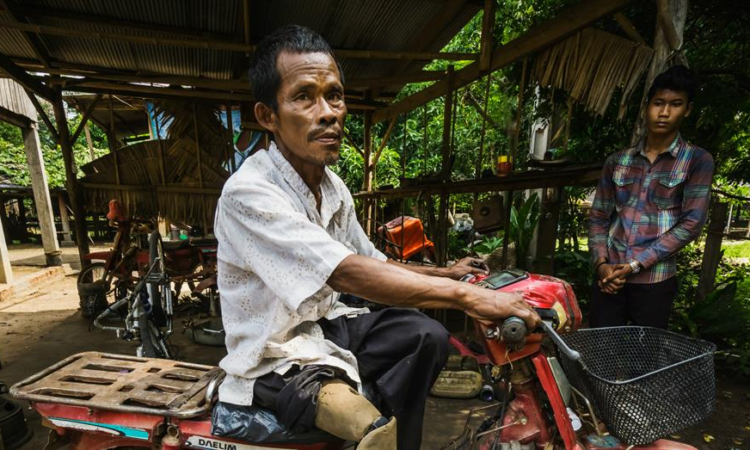
Disability is part of being human and is integral to the human experience. It results from the interaction between health conditions such as dementia, blindness or spinal cord injury, and a range of environmental and personal factors. An estimated 1.3 billion people – or 16% of the global population – experience a significant disability today. This number is growing because of an increase in noncommunicable diseases and people living longer. Persons with disabilities are a diverse group, and factors such as sex, age, gender identity, sexual orientation, religion, race, ethnicity and their economic situation affect their experiences in life and their health needs. Persons with disabilities die earlier, have poorer health, and experience more limitations in everyday functioning than others.
Health inequities arise from unfair conditions faced by persons with disabilities.
Structural factors: Persons with disabilities experience ableism, stigma and discrimination in all facets of life, which affects their physical and mental health. Laws and policies may deny them the right to make their own decisions and allow a range of harmful practices in the health sector, such as forced sterilization, involuntary admission and treatment, and even institutionalization.
Social determinants of health: Poverty, exclusion from education and employment, and poor living conditions all add to the risk of poor health and unmet health care needs among persons with disabilities. Gaps in formal social support mechanisms mean that persons with disabilities are reliant on support from family members to engage in health and community activities, which not only disadvantages them but also their caregivers (who are mostly women and girls).
Risk factors: Persons with disabilities are more likely to have risk factors for non-communicable diseases, such as smoking, poor diet, alcohol consumption and a lack of physical activity. A key reason for this is that they are often left out of public health interventions.
Health system: Persons with disabilities face barriers in all aspects of the health system. For example, a lack of knowledge, negative attitudes and discriminatory practices among healthcare workers; inaccessible health facilities and information; and lack of information or data collection and analysis on disability, all contribute to health inequities faced by this group.
Countries have an obligation under international human rights law, and in some cases domestic laws, to address the health inequities faced by persons with disabilities. There are two important international frameworks which relate to health equity for persons with disabilities.
The Convention on the Rights of Persons with Disabilities requires States Parties to ensure that persons with disabilities have access to the same range, quality and standard of free or affordable health care as other people.
The World Health Assembly Resolution WHA74.8 on the highest attainable standard of health for persons with disabilities calls for Member States to ensure that persons with disabilities receive effective health services as part of universal health coverage; equal protection during emergencies; and equal access to cross-sectoral public health interventions.
Disability inclusion is critical to achieving the Sustainable Development Goals and global health priorities to achieve health for all.
Universal health coverage will not be achieved if persons with disabilities do not receive quality health services on an equal basis with others. Investing in universal health coverage for persons with disabilities will benefit not only individuals but also communities.
There could be almost an US$ 10 return for every US$ 1 spent on implementing disability inclusive prevention and care for noncommunicable diseases.
Persons with disabilities must be considered when preventing and responding to health emergencies because they are more likely to be affected, both directly and indirectly. For example, during the COVID-19 pandemic, persons with disabilities living in institutions have been “cut off from the rest of society” with reports of residents being overmedicated, sedated, or locked up, and examples of self-harm also occurring (1).
In the COVID-19 pandemic, there are higher mortality rates among persons with intellectual disabilities (2), who are also less likely to receive intensive care services (3).
Promoting healthier populations through clean air and water, road safety, child nutrition and addressing violence against women will only be achieved if public health interventions for the wider population consider the needs, skills and capacities of persons with disabilities.
Women with disabilities being 2–4 times more likely to experience intimate partner violence than those without disabilities (4).
The WHO Global report on health equity for persons with disabilities outlines 40 key actions for countries to take to strengthen their health systems and reduce health inequities for persons with disabilities. There are three things that all governments and health sector partners can do. First, they must consider health equity for persons with disabilities in all health sector actions. Second, they can include persons with disabilities in decision-making processes. Third, they can monitor how persons with disabilities are being reached and benefitting from health sector actions.
WHO works to ensure persons with disabilities have equitable access to effective health services; are included in health emergencies preparedness and responses; and can access cross-sectoral public health interventions to achieve the highest attainable standard of health. Towards this goal, WHO:
References
Related
News
Fact sheets
Events







